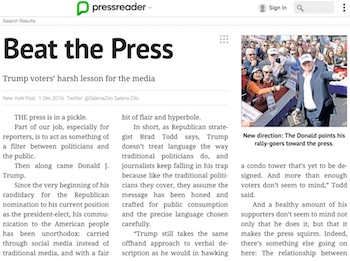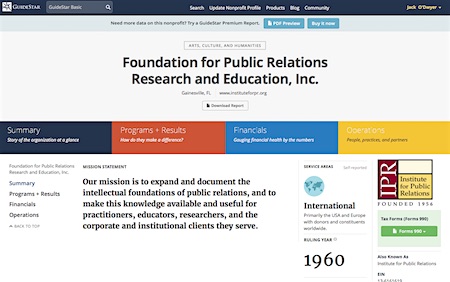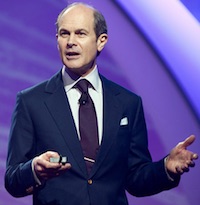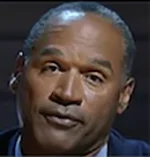 Failure of the press and PR to do their “professional” jobs opened the way for Donald Trump to co-opt their space, which he continues to do.
Failure of the press and PR to do their “professional” jobs opened the way for Donald Trump to co-opt their space, which he continues to do.
“The press is in a pickle,” wrote Salena Zito in the Dec. 1 New York Post.
“Trump supporters were mercilessly vilified and ridiculed throughout this entire campaign,” she wrote. “They were called racists, bigots, uneducated, hilljacks with serious women issues, and likely living in a government trailer on the government’s dime.”
Trump himself did not need “PR.” He went directly to the public via twitter.
That is one of the ways he achieved victory even though his “shoot-from-the-hip style” often got him in hot water.
Face-to-Face Urged
Fortune editor-at-large Geoff Colvin told the Institute for PR dinner Nov. 30 that experiments show that certain parts of the brain“light up” when people face each other but show no activity when their backs are turned.
|
|
Colvin referenced a study published in the November 7, 2012 Journal of Neuroscience that found “a significant increase in neural synchronization in the left inferior frontal cortex during a face-to-face dialog between partners but none during a back-to-back dialog.”
Although the human brain “evolutionarily adapted to face-to-face communications, other modes such as telephone and email increasingly dominate our daily life,” the study says.
Colvin discussed the benefits of F2F in a video titled “The Power of Human Interaction.”
McCorkindale Lauds F2F
Tina McCorkindale, Ph.D., president and CEO of IPR, expressed support for F2F in a 2013 essay in PRSA’s online PR Journal. The essay said a “dialogic loop,” meaning people talking to each other, is the ideal form of communications for PR people.
“Both parties must be willing to be open and listen to the other parties even if there is a disagreement,” said the 23-page article on “The Use of Social Media in Fortune’s Most Admired Companies.”
Neither McCorkindale or her assistant Jenn Moyer would help this reporter with coverage of the Nov. 30 dinner. Our seat in the top left corner of the room forced us to come to the middle of the room many times to take pictures. When McCorkindale said she did not have the text of the Hamilton address by Patrick Ford, we obtained it from the Burson-Marsteller press department.
IPR Operates Under Foundation Name
 Accessing the 990 Financial report of IPR brings up the title, “Foundation for PR Research & Education,” an entity created by PRSA leaders. Beneath that title is the IPR logo.
Accessing the 990 Financial report of IPR brings up the title, “Foundation for PR Research & Education,” an entity created by PRSA leaders. Beneath that title is the IPR logo.
IPR was founded in 1989 when leaders of the Foundation broke away from PRSA over the requirement that all board members of the Foundation had to be Accredited.
IPR had revenues of $620,794 in 2015 and expenses of $758,499 resulting in a loss of $137,705. McCorkindale, who lives in Seattle according to the Univ. of Florida directory, was paid $95,135. The Foundation had a profit of $95,524 on revenues of $312,466 and expenses of $216,942.
Although IPR is now 17 years old, McCorkindale announced at the dinner that IPR is celebrating its 60th anniversary. That would be the anniversary of the Foundation.
The press-avoiding policies of PRSA, whose leaders have not had a press conference since 1993 and which bars reporters from joining and/or accessing the membership list, have now come to IPR under the leadership of McCorkindale. Currently a director on the Universal Accreditation Board and a member of the Society’s MBA program committee, she is past chair of the Society’s Educators Academy and former co-chair of the Society’s national research committee.
Since she is an active leader in PRSA and participant in its activities and policies, her appointment to IPR signals the end of its period of independence from the Society.
F2F in Decline in PR
While Colvin, McCorkindale and others preach the value of F2F, there has been a decline in such activity in the PR and press communities in New York and elsewhere. F2F PR/press activity is a fraction of what it once was. P2P (phone to phone) and E2E (email to email) are also under tight corporate control.
Press groups themselves practice press avoidance. The Committee to Protect Journalists, which inveighs against press interference abroad and now says it will fight interference with press coverage in the U.S., won’t let working press sit with corporate guests at its annual dinner, which was Nov. 22 this year. Money isn’t the issue since it has a net worth of $16.5 million. The repeated claims of love of “press freedom” by speakers provoked “tweets” with words such as “hypocrisy,” “cognitive dissonance,” and “laughter” in the audience.
Press “Painfully Uninformed”
Zito, political correspondent for the Washington Examiner, said the press turned out to be “painfully uninformed.” Even now, the media can’t accept the election of Trump, she added. “Physician, heal thyself,” is her advice.
PR, which is supposed to perform a mediating role between the press and institutions, was mostly unused or absent during the election process. PR people have let themselves be dominated by marketing, legal and corporate administrators.
Ford said the “most important role” of PR people is to “focus as much or more on behavior as we do on words.”
Harold Burson, accepting the Foundation’s Paladin award for courage in communications in 2012, said PR has four duties—to listen; to be the corporate conscience; communicate (i.e., answer questions), and serve as "ombudsman" representing what is in the public’s interest to companies. Burson attended the IPR dinner Nov. 30.
Foundation Charges Press $500
Policy of the PRSA Foundation for several years has been to bar attendance by reporters unless they purchase a ticket at $500. That policy was initiated by former president Lou Capozzi and was continued by 2016 president Torod Neptune, corporate VP, corporate communications, Verizon Communications. Judith Harrison of Weber Shandwick is 2017 president. As of Dec. 31, 2014, latest financial report available, the Foundation had $692,878 in net assets.



 The techniques deployed by OJ Simpson's defense team in the 'trial of the century' served as a harbinger for those used by Donald Trump... People worry about the politicization of medical science just as much as they fret about another pandemic, according to Edelman Trust Barometer... Book bans aren't restricted to red states as deep blue Illinois, Connecticut and Maryland challenged at least 100 titles in 2023.
The techniques deployed by OJ Simpson's defense team in the 'trial of the century' served as a harbinger for those used by Donald Trump... People worry about the politicization of medical science just as much as they fret about another pandemic, according to Edelman Trust Barometer... Book bans aren't restricted to red states as deep blue Illinois, Connecticut and Maryland challenged at least 100 titles in 2023. The NBA, which promotes legalized gambling 24/7, seems more than hypocritical for banning player for placing bets... Diocese of Brooklyn promises to issue press release the next time one of its priests is charged with sexual abuse... Truth Social aspires to be one of Donald Trump's iconic American brands, just like Trump University or Trump Steaks or Trump Ice Cubes.
The NBA, which promotes legalized gambling 24/7, seems more than hypocritical for banning player for placing bets... Diocese of Brooklyn promises to issue press release the next time one of its priests is charged with sexual abuse... Truth Social aspires to be one of Donald Trump's iconic American brands, just like Trump University or Trump Steaks or Trump Ice Cubes. Publicis Groupe CEO Arthur Sadoun puts competition on notice... Macy's throws in the towel as it appoints two directors nominated by its unwanted suitor... The Profile in Wimpery Award goes to the Ford Presidential Foundation for stiffing American hero and former Wyoming Congresswoman Liz Cheney.
Publicis Groupe CEO Arthur Sadoun puts competition on notice... Macy's throws in the towel as it appoints two directors nominated by its unwanted suitor... The Profile in Wimpery Award goes to the Ford Presidential Foundation for stiffing American hero and former Wyoming Congresswoman Liz Cheney. JPMorgan Chase chief Jamie Dimon's "letter to shareholders" is a must-read for PR people and others interested in fixing America and living up to its potential... Get ready for the PPE shortage when the next pandemic hits... Nixing Netanyahu. Gaza carnage turns US opinion against Israel's prime minister.
JPMorgan Chase chief Jamie Dimon's "letter to shareholders" is a must-read for PR people and others interested in fixing America and living up to its potential... Get ready for the PPE shortage when the next pandemic hits... Nixing Netanyahu. Gaza carnage turns US opinion against Israel's prime minister. Trump Media & Technology Group sees Elon Musk's X as an option for those who want the free expression promised by Truth Social but without Donald Trump, owner of 57.3 percent of TMTG... Chalk one up for "anti-woke warrior" governor Greg Abbott as University of Texas lays off 60 DEI-related staffers... Five percent of Americans see the US as its own worst enemy, according to Gallup.
Trump Media & Technology Group sees Elon Musk's X as an option for those who want the free expression promised by Truth Social but without Donald Trump, owner of 57.3 percent of TMTG... Chalk one up for "anti-woke warrior" governor Greg Abbott as University of Texas lays off 60 DEI-related staffers... Five percent of Americans see the US as its own worst enemy, according to Gallup.


 Have a comment? Send it to
Have a comment? Send it to 
No comments have been submitted for this story yet.